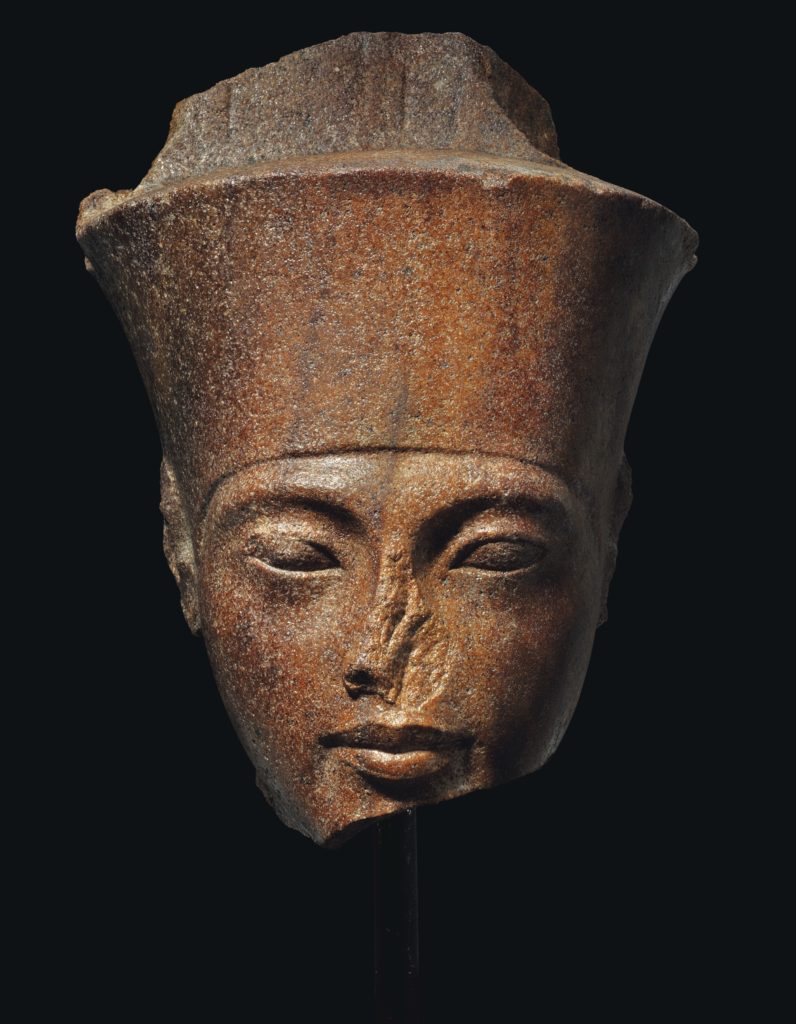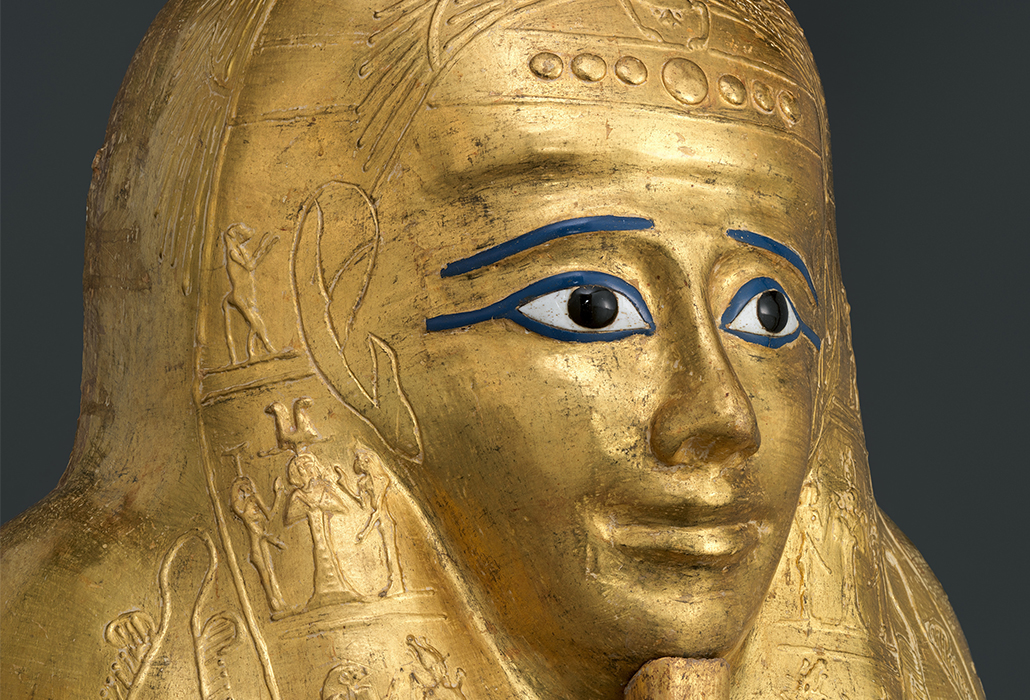A CENTURIES-OLD PRACTICE
The earliest known trial of looters in Egypt took place in Thebes in 1113 B.C. A gang of looters led by an enterprising quarryman named Amenpanefer pillaged rock-cut tombs. Invading armies also have carried off Egypt’s antiquities. Roman conquerors transported entire obelisks back home in purpose-built ships, serving as symbols of Augustus’ conquest in Egypt. From the 16th through the mid-20th centuries, when Egypt was dominated by foreign powers, countless pieces of its past were sent to cultural centers abroad by means of gift, trade, and coercion. The late nineteenth and twentieth centuries witnessed large-scale European explorations of the archaeology of ancient Egypt, which increased in intensity after the 1882 British occupation of Egypt. Foreign archaeologists received a portion of the artifacts found in their excavations through an official arrangement with Egyptian authorities known as partage, from the French for “sharing.” At the time, tourists and visitors bought antiquities and artifacts from licensed dealers in Egypt and because such items were considered personal possessions, these transactions often went undocumented. And although laws were already in place to protect the country’s ancient history, the modern concepts of cultural property and looting were still evolving.
Things began to change in Egypt during the 1950s with the dissolution of colonial empires which inspired a new sense of national identity, leading many countries to strengthen existing laws or enact new ones to protect their past, which included still buried artifacts. In 1970, UNESCO adopted the Convention on the Means of Prohibiting and Preventing the Illicit Import, Export, and Transfer of Ownership of Cultural Property, which to date 131 countries have signed. According to the agreement, artifacts are the property of their country of origin and pieces smuggled out must be returned. In 1983, Egypt outlawed the private sale of antiquities and declared that all items of cultural significance and over a century old belonged to the state.
The illicit trade escalated after the police state crumbled following the social upheaval of the Arab uprisings of 2011 which unseated president Hosni Mubarak after 30 years in power, creating a vacuum that has had a devastating effect on Egypt’s antiquities. Sites from the Pharaonic, Coptic and Islamic eras and museums were left unguarded, and raiders swooped in to loot them and the treasures were passed to the lucrative international antiquities black market. In 2013, America imported more than $10 million worth of Egyptian antiquities — a 105 percent increase from 2012. Although this pattern has decreased, particularly since September 2013 when the police and the army became re-engaged, it has resulted in a dramatic loss of sites and artifacts.
For the tomb robbers, theft takes a variety of forms. Individuals may dig several holes in sites hoping to find objects that they can sell. In some places, more organized gangs of looters have used dynamite and bulldozers to uncover and steal antiquities under the protection of guards armed with automatic weapons. The holes left behind are so numerous that they are clearly visible on satellite images. This unsupervised digging contributes to the destruction of sites, not only because objects are stolen, but also because sites’ context and history are compromised - rendering them almost useless to an archaeologist.
EGYPT FIGHTS TO GET ITS HERITAGE BACK
Egypt has drastically stepped up efforts in recent years to stop the trafficking of its antiquities. Over the past two years, it has recovered 1,000 illegally trafficked objects from abroad, including 586 in 2017, and has warned foreign museums that it will not help them mount exhibits on ancient Egyptian sites unless smuggled artifacts are returned. In fact, they have returned so many over the last few years that in 2015, the Egyptian Museum hosted an entire exhibition dedicated to repatriated artifacts - the first of its kind in the country.
Cairo has managed to regain the looted and stolen artifacts by working with both auction houses and international cultural groups. The nation has also received help from the U.S. Department of Homeland Security. In 2016, U.S. Immigration and Customs Enforcement’s (ICE) Homeland Security Investigations unit repatriated five illegally smuggled artifacts to Egypt as part of an ongoing investigation called “Operation Mummy’s Curse,” an ongoing multi-year investigation targeting an international criminal network that illegally smuggled cultural items around the world and “Operation Mummy’s Hand,” an HSI operation that seized a genuine artefact misrepresented as a science fiction movie prop.
Egypt’s collection of artifacts that have made their way home continues to grow. For example, in January of this year, an Egyptian stone tablet of King Amenhotep that had been smuggled out of Luxor, Egypt, was rescued from a London auction house after the Egyptian antiquities ministry scored auction websites across the world. With the help of Egypt's embassy in London and British authorities, the sale was halted and the artifact was returned to the Egyptian embassy in London in September.
Earlier this month, Egypt found itself involved in one of the most controversial auctions in years when it asked Interpol to help track down a 3,000 sculpture of the famed boy Pharaoh Tutankhamun after it was sold in Christie’s in London for almost £5 million to an anonymous buyer, despite Egypt warning it was probably stolen in the 1970s. Christie’s has strongly denied any wrongdoing, insisting that all necessary checks were made over the bust's provenance and that its sale was legal and valid.

The Archaeological Institute of America, a nonprofit group representing archaeologists in the US, estimates that as many of 85-90 percent of "classical and certain other types of artifacts on the market do not have a documented provenance." This makes it difficult to pinpoint the true origins of artifacts or the validity of claims to ownership. But many argue that there is little scrutiny or regulation on antiquities dealers, auction houses, and buyers, who are accused of turning a blind eye toward the provenance of artifacts. In his lecture on the market, demand, and neutralization, Greek forensic archaeologist Dr Christos Tsirogiannis put it simply: “There is no black market for antiquities and no white market for antiquities. There is simply one market for antiquities.”
Egypt’s fight to protect its heritage and bring home its priceless treasures is not one that is only fought on the ground at archaeological sites or in auction houses, but also with some of the biggest museums and institutions dedicated to human history, art and culture. This past February, the Metropolitan Museum of Art ended an exhibition earlier than expected when the centerpiece of “Nedjemankh and His Gilded Coffin”—after seven months on view with robust attendance figures nearing 450,000—was found to have been looted from Egypt. The museum had acquired the ornate golden coffin from the first century B.C. two years ago for €3.5 million (around $3.9 million) from Christophe Kunicki, a Parisian art dealer who supplied fake provenance records including a forged Egyptian export license dated 1971. According to an investigation by the Manhattan District Attorney’s Office, however, it appeared that the coffin had been stolen from its homeland in 2011. In response to the finding, the Met agreed to turn the artifact over to the Egyptian government.

But for some of Egypt’s most precious artifacts, finding their way back home hasn’t been as easy. One of the items on Egypt’s repatriation wish-list is the 725kg Rosetta Stone which has been displayed at the British Museum in London for more than 200 years. The ancient slab, which is engraved with three languages and unlocked the secret of Egypt’s hieroglyphs, has been a long-running sure of tension between Cairo and London. British soldiers captured the stone in 1801 after defeating Napoleon’s army in Egypt and transferred it to the British Museum where it has long been the most-visited object. Egyptian officials have demanded the return of the Rosetta Stone for decades but have never succeeded in convincing the British museum to hand it over. Requests have also been made for other ancient artifacts spirited out of the country during colonial times like the 3,300-year-old bust of Queen Nefertiti that has been in a Berlin museum for decades. Germany has continually declined these requests, saying it was in Germany legally and is too fragile to move. But Egypt contents it was taken out with fraudulent documents in 1913.

One of the counterarguments museum directors make to defend their ownership of artifacts plundered addresses how expensive and potentially risky it could be to transport some of these priceless objects. The Neues Museum in Berlin, for example, once claimed that Nefertiti's bust was too delicate to transport back to Egypt. They also point to issues of safe-keeping and what happens when they get to their destination - especially if that’s in a country that may be experiencing instability and warfare. This may seem like a valiant cause, but it essentially means that countries like Egypt cannot be trusted to preserve their own cultural heritage. This notion angers many and the calls for repatriation are growing every day.
Some museums have started to try and acknowledge that their collections have uncomfortable histories tied to colonial violence. Nevertheless, Britain’s long-standing policy is not to cease ownership over its looted treasures. As then-Prime Minister David Cameron said of Greece’s Elgin Marbles and India’s Koh-i-Noor diamond: “No, I certainly don’t believe in “returnism”, as it were. I don’t think that is sensible.” The British Museum, which is currently facing repatriation demands from Italy, Greece, the Easter Island and Egypt, recently told the Guardian why it believed it was important to maintain the status quo, explaining that the strength of the collection “is its breadth and depth, which allows millions of visitors an understanding of the cultures of the world and how they interconnect—whether through trade, conflict, migration, conquest, or peaceful exchange.”
The murky issue of artifact ownership and repatriation remains a hot topic among historians, curators, archaeologists, and politicians. This applies to both objects taken today, which are in clear violation of the law, but also the ethics of objects removed from their homes before such definite laws existed. There is also no clear legal framework accepted by both sides that determines which works will be subject to a repatriation claim, and which works will be left alone in museums or private collections. Although the UN made some progress by establishing a 1970 convention designed to curb the export of stolen artifacts and allow countries to issue repatriation claims, then pay to have the objects returned, many museums around the world have interpreted this convention to mean that if they can prove an object left its country of origin before 1970, they’re in the clear. The pressure on museums to grapple with the provenance of their collections and to return them, however, will likely continue.






